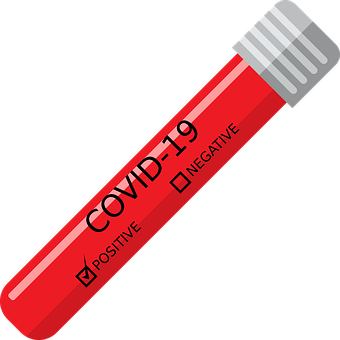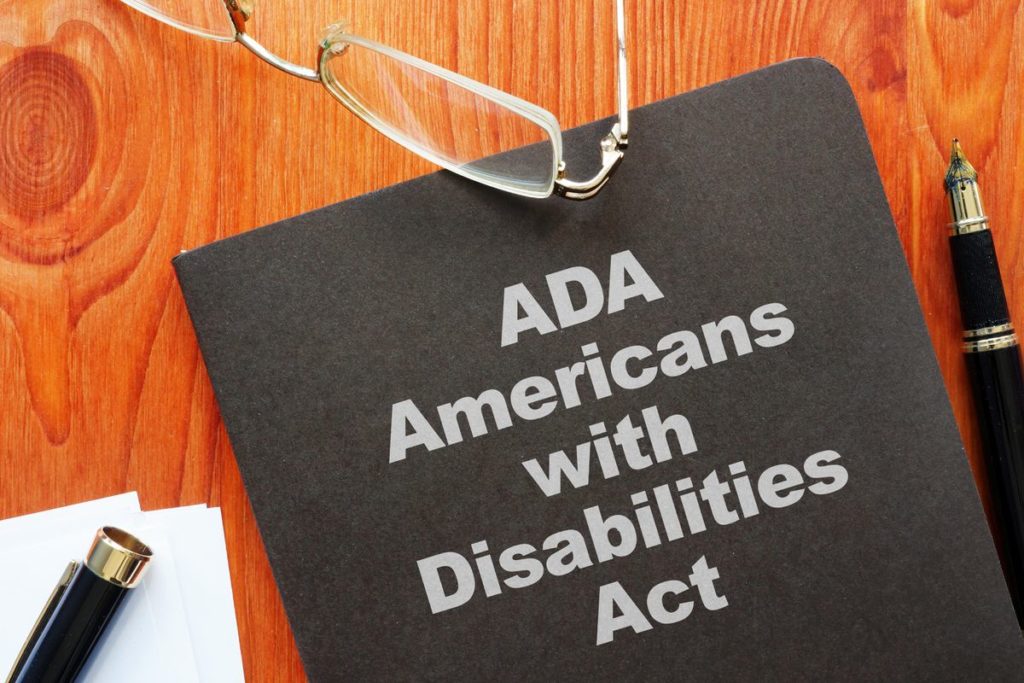Below is a review of the posts (on Facebook, LinkedIn, and Twitter) from the past week. You can check out the full posts by clicking on the links.

In the post on Sunday 8/30/20 we asked: When can employers require employees to provide COVID-19 test results? This comes up in the context of granting leave and returning to work. The answer lies at the intersection of several laws: FFCRA, IRS regulations for FFCRA tax credit, FMLA, ADA, and OSHA. Under the FFCRA (the Families First Coronavirus Act), as noted in an earlier blog and post, full-time employees are entitled to 10 days of paid leave at their regular rate if unable to work or telework for the reasons in the post (and others). What the employee must provide to the employer when requesting FFCRA paid sick leave is also listed in the post. And what can – and can’t – the employer ask of the employee? See the post. If the employer is looking for a tax credit for the FFCRA paid sick leave, what it needs is in the post. The FMLA also applies but does not permit employers to require COVID-19 test results. What is allowed, and how it intersects with FFCRA paid sick leave, is in the post. Next is the ADA . The employer may require disclosure of test results or administer tests as noted in the post (and in compliance with EEOC Guidance). OSHA may also come into play – see the post.
TAKEAWAY: While one statute may not allow the employer to do or ask something, another may, and the answer may determine what happens under both statutes. Consult an employment lawyer to help you navigate the web of applicable laws.

The post on Monday 8/31/20 was about ADA “perceived as disabled” employment lawsuits in the age of COVID-19. Most people are familiar with the ADA’s protections of disabled employees, but don’t forget about another category of protection: for employees who are regarded by the employer as being disabled. What type of perceived disability it must be is noted in the post. What is different under the “regarded as” prong from the “actual disability” prong is that the alleged impairment need not limit a life activity in the former. Examples of suits under the “regarded as” prong are in the post. The first is a federal (Third Circuit) case that is governing law in PA and NJ. A manager told an employee that they either did not know what they were doing or had dyslexia. The employee then requested accommodations for dyslexia; what the employer did, and how the lawsuit played out, are in the post. The next case is also from the Third Circuit, from May 2020. There, the employee took 2 months’ leave for a lung biopsy procedure and 2 days of vacation for an upper respiratory infection. Suit was brought under the “regarded as” prong. What happened at the trial and appellate court levels is in the post (and instructive). There is also another federal case discussed in the post. Finally, the post delves into the affect of COVID-19 on the “regarded as” prong (including whether job offers can be withdrawn or postponed related to certain high-risk applicants/employees).
TAKEAWAY: The ADA’s “regarded as” prong applies in any setting but may come to the forefront more as decisions are made that involve COVID-19 and high-risk applicants and employees. Stay legal.

The post on Tuesday 9/1/20 asked: Can employers require employees to get vaccinated when a COVID-19 vaccine becomes available? As is often the case in the employment law realm, the answer is “it depends”. The EEOC has not yet offered guidance on this but has relative to the ADA and Title VII (where the answer is in the post). Often those who have certain medical conditions are exempt from directives that are otherwise health-related, but that might not protect them in the COVID era if they present a direct threat in the workplace. What the EEOC has said about whether COVID-19 meets the “direct threat” standard is discussed in the post. Religious accommodation under the ADA may also fall to COVID in some circumstances – see the post. For employers considering requiring COVID-19 vaccines, consideration should also be given to any union policies/requirements, the ADEA, and the other things listed in the post. Finally, the post lists a few things as alternatives to vaccination; it is this author’s opinion that those things are not an alternative, but rather may be additions to vaccination (once available).
TAKEAWAY: Employers should start to develop policies for when a vaccine is available, but until then have in place a COVID protocol applicable to all employees.

The post on Wednesday 9/2/20 shifted focus and talked about a homeowners’ association that asked woman to remove a flag supporting police (and asked if the delay does (or should) affect enforcement. Aimee had a Thin Blue Line flag supporting police on her front porch. The HOA nicely asked that she remove it. However, the flag was not new, but had been flown for many years. The letter is copied in the post and cites to the Governing Documents for that Association. The result – or action available to the Association or “defense” available to the owner – will differ with each association’s documents (and possibly applicable state law).
TAKEAWAY: Freedom of speech is a constitutional guaranty we all enjoy but choosing to live in a planned community is a deemed waiver of certain freedoms – the extent may require interpretation or guidance by an attorney versed in community association law.

The post on Thursday 9/3/20 taught us that the ADA suit of a fired worker with Tourette’s syndrome was reinstated. So, what happened? Brian has Tourette’s as well as ADHD and major depression. He was a store manager for O’Reilly Auto parts. Brian is on medication, but still has motor tics and mild verbal noise and cannot easily concentrate. Despite that, what he did and how he performed at work is detailed in the post. Then he lost 2 employees, impacting the hours he worked which, in turn, affected his symptoms. He asked for an accommodation (noted in the post) but the employer said no. Brian then filed suit. This case went up on appeal on procedural grounds (a jury instruction by the trial court) but is instructive as to what an employee needs to show to prove an ADA violation for failure to accommodate. See the post for the details.
TAKEAWAY: The ADA is broadly applicable – know who is eligible to request accommodation and the process thereafter. Consult a knowledgeable employment lawyer.

The post on Friday 9/4/20 was about COVID-19 employment law litigation : wrongful death. Deaths caused by COVID-19 infections that are allegedly connected to the workplace. Morbid, yes, but this might affect your business. The cases are starting to wind their way through the court system, but it may take years for precedential opinions to be issued. However, we now have 2 cases, one dealing with the alleged wrongful death of an employee from COVID-19 and the other the death of an employee’s spouse. The basis of suit in both is noted I the post. The spousal suit was brought by a woman shoes husband was a butcher in a meat-packing facility. He contracted COVID-19 and infected her; she died. More facts are in the post, as are the things the employer allegedly refused to do but should have. The other suit was brought by family members of a deceased assisted living facility employee. Again, what they allegedly did, as sanctioned by the employer, is in the post.
TAKEAWAY: Following required protocols is the best way an employer can try to prevent suit arising from COVID-related matters. Know what to do (or not to do).

Finally, in the post yesterday 9/5/20, we noted that COVID-19 litigation tests the limits of employment discrimination law (and suggested that you know your (potential) rights and obligations under PA and federal law). Employers may want employees to return to the workplace, but the employees may not want to or may not be able to due to children being at home or for other COVID-19 related reasons. In one case, Yiyu Lin, a 55-year-old Chinese American with a history of high blood pressure, began to telework in his job as a senior engineer. His GM said “corporate” was preventing implementation of COVID-19 safety measures. Lin saw other signs too – as noted in the post. Five days after the Governor instituted a lockdown for non-essential businesses, the employer told all teleworkers to report back to work in 2 days. Lin asked to continue teleworking and explained why. He used PTO and sick days so as not to return while the company was considering his request. The company shortly denied his request and told him to return to the workplace. What else it did – and which led to the suit – is noted in the post. Lin did not return to the workplace and was terminated. Curiously, only a few days later, the company told all employees to work remotely. But it did not rehire Lin. He sued on the grounds listed in the post. The company filed a motion to dismiss most of the claims – its asserted defenses are in the post – but even if granted the suit will go forward on the remaining claim.
TAKEAWAY: Employees and employers need to be aware of their rights and obligations related to the jobs in this era of COVID-19 – both should get advice form a competent employment lawyer.

 York, Pennsylvania 17403
York, Pennsylvania 17403